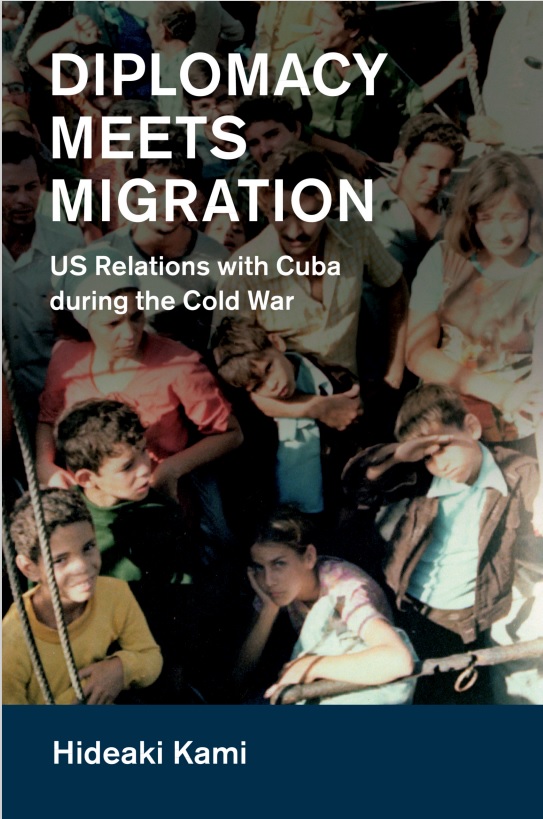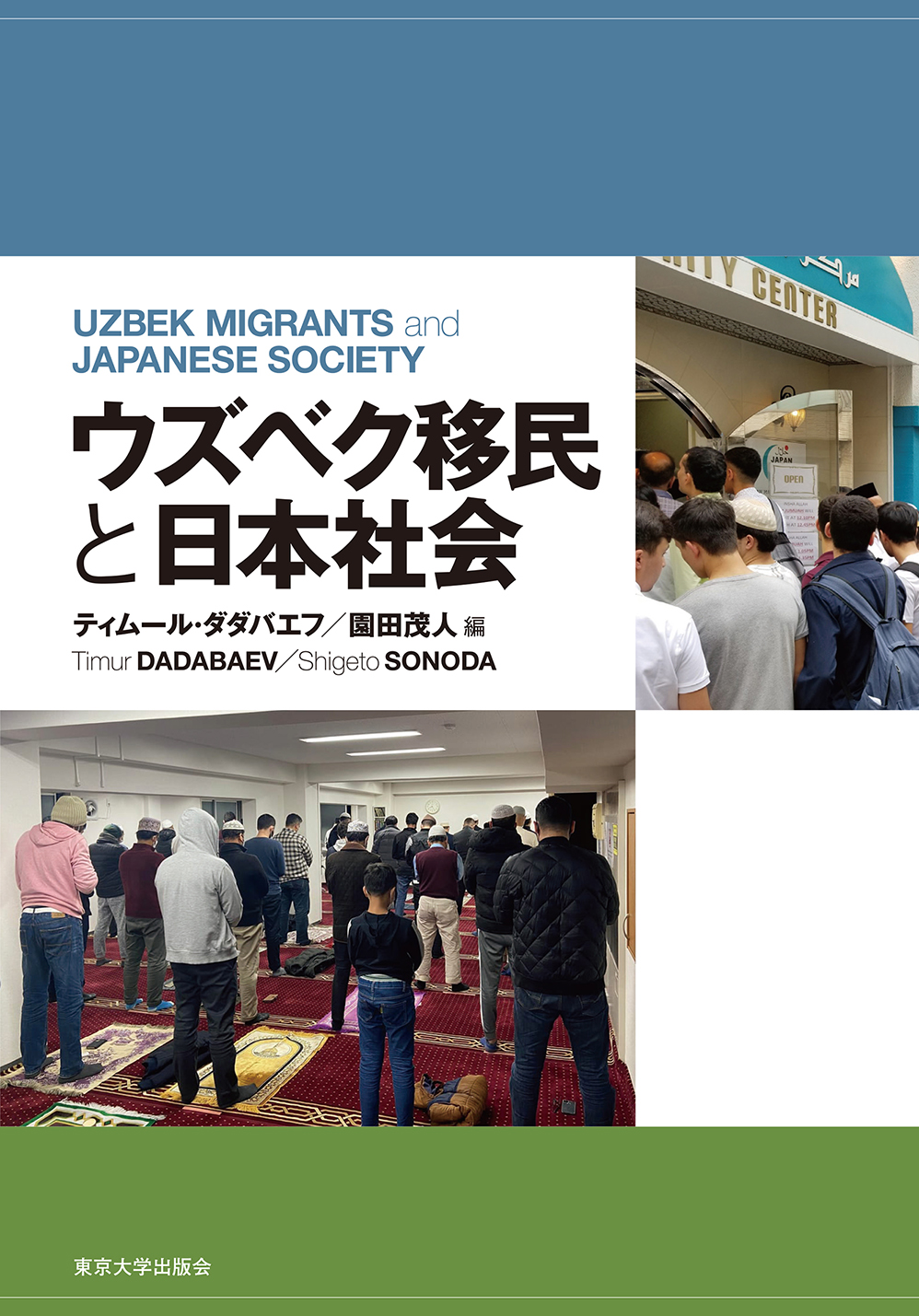
Title
Cambridge Studies in US Foreign Relations Diplomacy Meets Migration US Relations with Cuba during the Cold War
Size
360 pages
Language
Japanese
Released
June, 2018
ISBN
9781108423427
Published by
Cambridge University Press
Book Info
See Book Availability at Library
Japanese Page
When we think of US-Cuban relations, the first thing that comes to our mind is the Cuban Missile Crisis of 1962. During this climax of the Cold War, the world came to the brink of nuclear war. But why did the crisis develop over the fate of Cuba, a small island nation in the Caribbean? How have US-Cuban relations evolved before and after the crisis?
When I first began thinking about these questions, I was a first-year university student at the Komaba campus of the University of Tokyo. I began studying US-Cuban relations, but as I delved deeper into this issue, I encountered various questions that could not be answered by just using international relations theories, which drew me even further into this topic. After advancing my studies in graduate school, I expanded the scope of my research to encompass the history of North America, Latin America, international relations, the Cold War, and migration. The result was this book: Diplomacy Meets Migration: US Relations with Cuba during the Cold War.
Certainly, a vast amount of previous research on US-Cuban relations already exists. Upon closer inspection, however, almost all of the existing scholarship relies on US historical documents alone. That is not surprising, since the United States stubbornly refused to restore diplomatic relations with Cuba until President Obama reversed the policy in December 2014. The United States had already normalized diplomatic relations with China during the Cold War and established economic relations with Vietnam—the former enemy during the tragic Vietnam War—some years after the end of the Cold War. Nevertheless, the same country intensified economic sanctions and travel restrictions on Cuba. Scholarly research had stagnated for decades.
Why did it take so long for the U.S. government to restore diplomatic relations with Cuba?
To answer this question, this book focuses on the political influence of Cuban exiles living in the United States. After the Cuban Revolution of 1959, opposition to the Cuban revolutionary government, the so-called counterrevolutionary movement, gathered force in Florida, opposed normalization of US-Cuban relations, and engaged in lobbying activities and electoral politics. Because those who had lost in the revolutionary war continued to intervene in the affairs of their home country even after their departure and their participation in US politics, Cuba’s civil war persisted beyond anyone’s imagination.
The unique nature of Cuba’s revolutionary-versus-counterrevolutionary battle required a new approach to the history of US-Cuban relations. I analyzed thousands of newly declassified documents I obtained in Washington and Havana. I also studied valuable historical records on the Cuban American National Foundation, a major player in the anticommunist movement in Miami, Florida. Based on this expansive research, the book explores the triangle relationship between Washington, Havana, and Miami. This required an enormous amount of effort, but as a Japanese national, I was able to listen to people with vastly different and conflicting worldviews.
The history of US-Cuban relations has important implications for the transformation of North America, Latin America, and the relationship between the two continents during the last half century. Today the number of Latinos living in the United States exceeds 55 million, making the presence of this population more visible. How will this migration-driven demographic change in the United States shape the formulation of U.S. foreign relations with the rest of Latin America? How will the migration-driven transformation of U.S. society affect world politics? I hope anyone interested in these questions will have a chance to read this book and advance the discussion further.
(Written by KAMI Hideaki, Associate Professor, Graduate School of Arts and Sciences / 2021)
Table of Contents
1. Between Revolution and Counterrevolution: Origins of Washington’s Relations with Havana and Miami
2. The Legacy of Violence: Realpolitik, Détente, and Counterrevolutionary Terrorism in the Caribbean, 1968-1975
3. A Time for Dialogue? Jimmy Carter, Fidel Castro, and the Triangular Dynamics around Migration
4. The Crisis of 1980: The United States, Cuba, and a Diplomatic Battle over Migration Control
5. Acting as a “Superhero”? Ronald Reagan, the Cuban American Lobby, and the Legacy of the Mariel Crisis
6. The Two Contrary Currents: Migration Talks, Propaganda War, and the Future Trajectory of US Relations with Cuba
7. Making Foreign Policy Domestic? The End of the Cold War and the Political Ascendancy of Miami Cubans
Conclusion
Related Info
KAMI Hideaki “Gaiko to Imin” (The University of Nagoya Press, 2019)
https://www.unp.or.jp/ISBN/ISBN978-4-8158-0948-5.html
Awards:
The 35th Masayoshi Ohira Memorial Prizes (Masayoshi Ohira Foundation 2019)
http://ohira.org/eng/2019/06/12/35-titlewinner/2/
The 24th Shimizu Hiroshi Award (Japanese Association of American Studies 2018)
http://www.jaas.gr.jp/english/
Related Articles:
[Research Reports] Hideaki Kami “Human Mobility and Economic Statecraft: The Case of the Mariel Crisis” (The Japan Institute of International Affairs Sept. 6, 2021)
https://www.jiia.or.jp/en/column/2021/09/economy-security-linkages-fy2021-03.html
Reviews:
Reviewed by Patrick Iber (Cuban Studies No.50, p.310-312 2020)
https://www.jstor.org/stable/27082014?seq=1#metadata_info_tab_contents
'Kami has fashioned a compelling assessment of Cuban immigration as a factor of decisive policy importance, and thereupon to plumb deeply into the complexities of Cuba-US relations between the 1960s and the 1990s. He answers some old questions and, just as important, he has raised new ones.' Louis A. Pérez, The American Historical Review
'Kami's transnational approach to narrating how Cuban migrants actively shaped the US 'national interest' is valuable to scholars of international migration … To interlace previously disparate threads of Washington, Havana, and Miami’s relationships with one another, Kami draws on an impressive range of sources.' Melissa Hampton, International Migration Review
https://journals.sagepub.com/doi/10.1177/0197918319855071
'Kami's remarkable study reminds us that migration remains a historical constant. Rare is the nation that exists without some portion of its citizens living abroad.' Jonathan C. Brown, Diplomatic History
'Diplomacy Meets Migration is based on an impressive range of sources, including (recently declassified) US and Cuban government archives, records of Cuban-American lobby groups, and supporting materials from the diplomatic records of Canada, Japan, Mexico and the United Kingdom. The insights that Kami derives from these archives, as well as secondary sources that range from diplomatic histories to sociological studies, add up to an original analysis of US-Cuban relations throughout the Cold War.' Jorrit van den Berk, Diplomatica
https://brill.com/view/journals/dipl/1/2/article-p305_305.xml
'Analysts disagree about how to explain a state's foreign policies. One group focuses on the effects the power distribution among states has on the actions of a state; a second group emphasizes the role of domestic politics; and a third concentrates on the ideas and beliefs of the state's leaders. Kami's excellent analysis transcends those artificial boundaries … he identifies the multiple external factors that affected the complex interactions between Havana, Washington, and Miami.' Alex Roberto Hybel, The Americas
https://muse.jhu.edu/article/754830/pdf



 Find a book
Find a book


